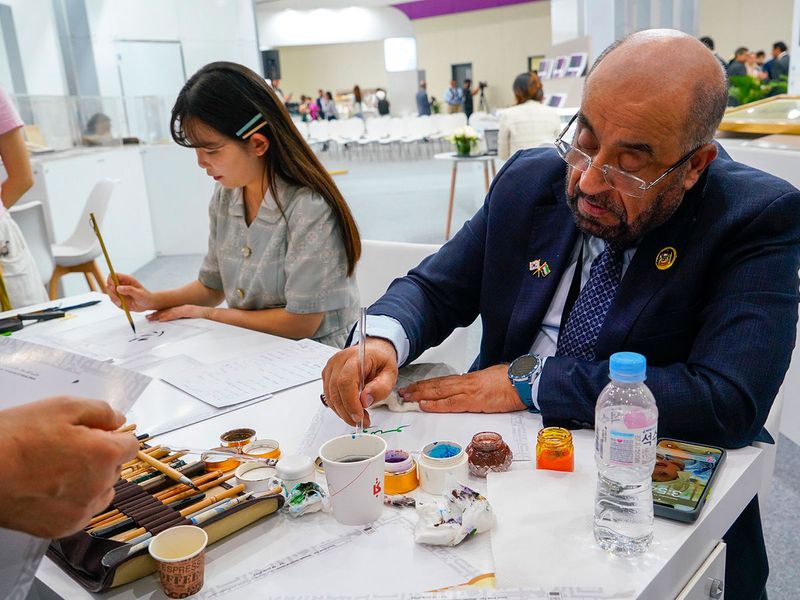A recent workshop, titled "Printing Arts," brought together Emirati and Korean artists to showcase their distinctive artistic practices that bridge the gap between calligraphy, illustration, and photography. The event fostered a dialogue on how these mediums can be employed to create powerful and impactful works of art.
Khalid Mezaina, an Emirati artist, and Ahn Kyong Mi, from Korea, served as the workshop's central figures. They presented a visual feast, showcasing how letters, words, and images intertwine to breathe life into their creations. Mezaina, likely, delved into the rich heritage of Emirati calligraphy, demonstrating its potential to be more than just a means of communication, but a visual language in itself. Ahn, on the other hand, might have shed light on Korean artistic traditions, where intricate details and symbolism often play a significant role.
The workshop delved deeper than simply showcasing artistic techniques. Researcher Ali Al-Abdan and artist Myong Jin offered valuable insights into the profound impact visual arts hold in both Korea and the UAE. Their discussion likely centered around the convergence of letters, words, and images, and how these elements combine to form a powerful artistic language. They might have explored how these artists utilize heritage symbols to represent their respective cultures within their work. By incorporating such symbols, the artists not only pay homage to their traditions but also imbue their creations with a deeper layer of meaning, allowing viewers to connect with their cultural identity.
This focus on heritage resonated throughout the workshop. The artists' journeys were likely a central theme, with discussions exploring how their cultural backgrounds have shaped their artistic sensibilities and the creative choices they make. The influence of these traditions was most likely evident in the variety of symbols that appeared in the artworks presented. These symbols, imbued with cultural significance, functioned as a bridge between the artists and their audience, fostering a sense of understanding and appreciation.
The "Printing Arts" workshop transcended the realm of artistic technique, emerging as a platform for cultural exchange. By bringing together Emirati and Korean artists, the event provided a glimpse into the unique artistic landscapes of both nations. It highlighted the power of visual language, showcasing how calligraphy, illustration, and photography, when used in tandem, can transcend cultural barriers and resonate with a global audience.

